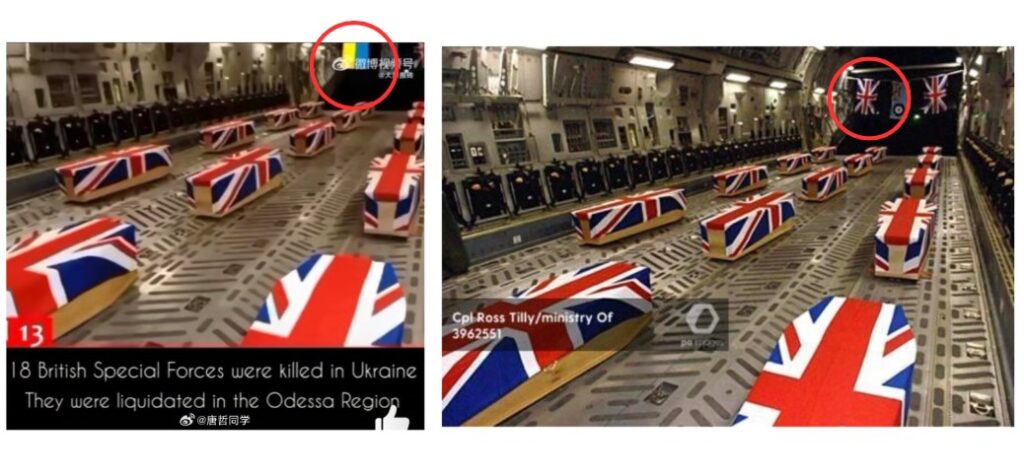Misinformation surrounding Western countries’ involvement in the Ukraine conflict remains rampant, nearly three years after Russia’s full-scale invasion began in February 2022. A recent instance that exemplifies this issue involves a photo circulating on social media that falsely purports to represent coffins of British soldiers who died in the war. This image is, in fact, over a decade old, originally taken in September 2006, after a tragic plane crash in Afghanistan resulted in the deaths of 14 British servicemen. The spread of such misinformation reflects a troubling trend, particularly as the ongoing conflict has drawn global attention and involvement, making it a ripe target for various forms of propaganda.
Adding to the confusion, a social media post on Chinese platform Weibo recently claimed that 18 members of British special forces had infiltrated Russia from Ukraine and subsequently died, stating they returned in “wooden boxes.” The post falsely asserted, “18 British Special Forces were killed in Ukraine. They were liquidated in the Odessa Region.” In reality, the British government has provided Ukraine with military support, but there has been no official report of British ground troops being deployed in Ukraine. This disparity between facts and allegations highlights the complex narrative surrounding international involvement in the conflict.
President Zelensky’s call for foreign fighters to join an “international legion” to aid Ukraine further complicates the discourse surrounding foreign involvement. The Russian military claims to have killed almost 6,000 foreign fighters since the beginning of the war, a statistic reported by the state news agency TASS. However, despite warnings from the British government against citizens traveling to Ukraine to participate in the conflict, some Britons have reportedly faced dire consequences, including capture or death. This backdrop of danger and misinformation creates a convoluted narrative about the participation of Western nations and their citizens in the conflict.
The viral photo incorrectly identified as depicting British soldiers killed in Ukraine can be traced back to its original context. A reverse image search and keyword searches led to its identification on the PA Media website, where the image was published with proper attribution to Royal Air Force photographer Ross Tilly in September 2006. The original image depicts the coffins of soldiers being repatriated after a tragic air crash, evident from the visible British flags and the RAF logo, elements intentionally manipulated in the fraudulent versions circulating online.
Further investigation revealed that the soldiers in the original image died in an aviation accident involving a reconnaissance plane that exploded during mid-air refueling due to fuel ignition. This incident was also reported by the BBC shortly after it occurred, affirming that the photograph is entirely unrelated to the current conflict in Ukraine. The ability to compare and contrast the original photo with its manipulated versions highlights the importance of fact-checking in combatting misinformation, an essential component as the war continues.
In conclusion, the spread of false information regarding the Ukraine conflict not only muddies the waters surrounding the official roles of foreign countries but also risks compromising the safety and understanding of those interested in the situation. The case of the misattributed photo is just one example of how misinformation can distort public perception and dialogue about ongoing global conflicts. Journalistic efforts and fact-checking organizations like AFP are critical in debunking such myths, striving to present an accurate narrative in a time of uncertainty and challenge.

